Here is a wonderful short video by Erin Edwards, a First Class Cadet at the US Coast Guard Academy. She gives us a quick tour of an 87′ patrol boat.
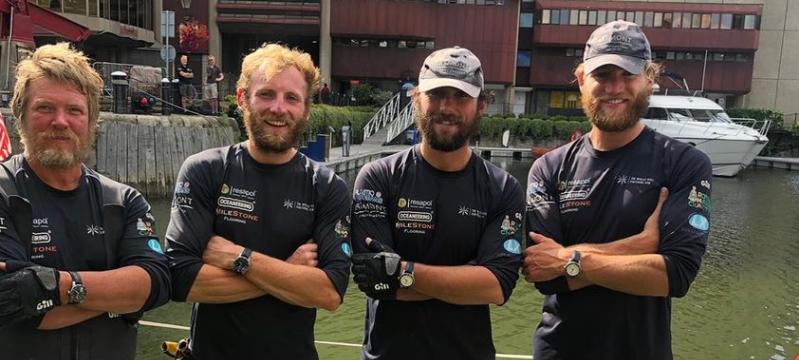 Congratulations to the Ocean Revival Adventures team who have become the first to row from New York to London. The team of four serving and former serving Royal Marine Commandos completed the epic 72-day, 3,700-mile row across the North Atlantic from the Brooklyn Bridge in New York City to Tower Bridge in London.
Congratulations to the Ocean Revival Adventures team who have become the first to row from New York to London. The team of four serving and former serving Royal Marine Commandos completed the epic 72-day, 3,700-mile row across the North Atlantic from the Brooklyn Bridge in New York City to Tower Bridge in London.
In May, I was fortunate enough to meet Ian Clinton and Simon Chalk, members of the Ocean Revival Adventures crew, waiting with their ocean rowing boats at Liberty Landing in New York harbor for a suitable weather window to set off on what has been dubbed the “world’s most dangerous row.” See our previous post.
 In addition to being a museum ship as America’s only steam-powered lighthouse tender, the ex-USCG Cutter Lilac serves as a community arts and education space. Unfortunately in the past year, the pandemic temporarily shut these programs down. Now the exhibitions are restarting, inaugurated with work by Melissa Godoy Nieto.
In addition to being a museum ship as America’s only steam-powered lighthouse tender, the ex-USCG Cutter Lilac serves as a community arts and education space. Unfortunately in the past year, the pandemic temporarily shut these programs down. Now the exhibitions are restarting, inaugurated with work by Melissa Godoy Nieto.
Waters Change, Colors Fade is an exhibition by Mexican-born multi-media artist Melissa Godoy Nieto drawing on her personal experience observing both the vibrancy of healthy coral reefs and the coral degradation caused by climate change, Godoy Nieto shares an underwater wilderness through drawings, textile collages and installation.
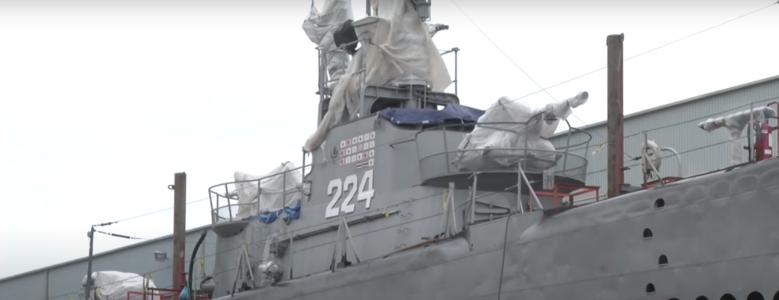 Tomorrow, the Gato Class submarine USS Cod commissioned in 1943, will be towed back to its dock in Cleveland, OH following a $1.4 million drydocking at Donjon Shipbuilding in Erie, PA. While on dock, the 78-year old submarine had ballast tank plating renewed, refurbished torpedo tubes installed, and received a fresh coat of paint. A Cleveland homecoming celebration is planned for Sunday, August 22 at 1PM.
Tomorrow, the Gato Class submarine USS Cod commissioned in 1943, will be towed back to its dock in Cleveland, OH following a $1.4 million drydocking at Donjon Shipbuilding in Erie, PA. While on dock, the 78-year old submarine had ballast tank plating renewed, refurbished torpedo tubes installed, and received a fresh coat of paint. A Cleveland homecoming celebration is planned for Sunday, August 22 at 1PM.
Cod is credited with sinking more than 12 enemy vessels totaling more than 37,000 tons, and damaging another 36,000 tons of enemy shipping. All seven of her war patrols were considered successful and Cod was awarded seven battle stars for her service in World War II.
 Last September, the Spanish government issued restrictions on operating sailboats less than 15 meters long off a section of its Galician coast after multiple cases of encounters with pods of orcas, also known as killer whales. Last week, Spain issued new restrictions on the navigation of sailboats of less than 15 meters in a less than 10 nautical mile stretch of coastline, south of Cadiz, between Cape Trafalgar and Barbate. The restricted area extends from 2 to 9 miles from the coast. The restrictions are for two weeks but may be modified depending on the circumstances.
Last September, the Spanish government issued restrictions on operating sailboats less than 15 meters long off a section of its Galician coast after multiple cases of encounters with pods of orcas, also known as killer whales. Last week, Spain issued new restrictions on the navigation of sailboats of less than 15 meters in a less than 10 nautical mile stretch of coastline, south of Cadiz, between Cape Trafalgar and Barbate. The restricted area extends from 2 to 9 miles from the coast. The restrictions are for two weeks but may be modified depending on the circumstances.
The orcas bump the boats’ hulls, often damaging the rudder and in some cases biting the boat’s keel in what has been described as violent but fundamentally playful behavior.
Since March 27, when the orca encounters reoccurred, there have been 56 reported attacks on sailboats by orcas. In at least 25 cases, damage done by the orcas was severe enough to require Spanish Marine Rescue to tow the boats to a safe harbor. So far, there are no reports that anyone has been killed or seriously injured in the encounters.
 It is amazing how many commonplace items are related to ships and the sea. Or perhaps not, given that over 70% of the globe is covered by water and 90% of all trade is moved by sea. Here is one example of an unexpected connection to ships.
It is amazing how many commonplace items are related to ships and the sea. Or perhaps not, given that over 70% of the globe is covered by water and 90% of all trade is moved by sea. Here is one example of an unexpected connection to ships.
Remember the Slinky? The children’s toy has been around for more than 75 years now and is still extremely popular. It was the creation of Richard James, a naval mechanical engineer stationed at the William Cramp & Sons shipyards in Philadelphia. In the early 1940s, he was attempting to use torsion springs to stabilize sensitive instruments aboard ships in rough seas.
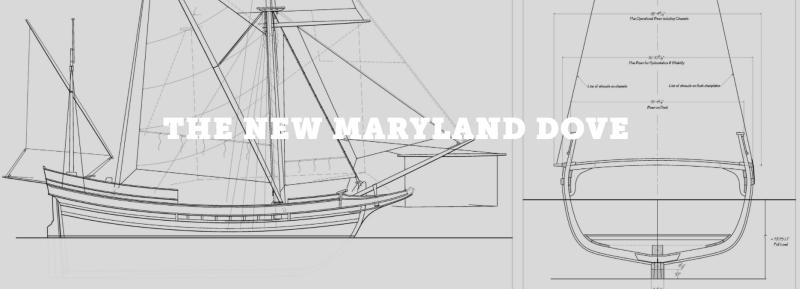 The Chesapeake Bay Maritime Museum is nearing the completion of the construction of a new Maryland Dove, a reproduction of the 17th-century trading ship that accompanied the first settlers to what is now Maryland in 1634. Maryland Dove is owned by the state of Maryland and operated and maintained by the Historic St. Mary’s City Commission.
The Chesapeake Bay Maritime Museum is nearing the completion of the construction of a new Maryland Dove, a reproduction of the 17th-century trading ship that accompanied the first settlers to what is now Maryland in 1634. Maryland Dove is owned by the state of Maryland and operated and maintained by the Historic St. Mary’s City Commission.
Ark and Dove were the two ships that began the Maryland Colony. Dove was a small, 40-ton capacity cargo ship purchased by Cecil Calvert and investors so that the colonists would have their own ship to use once Ark had sailed for England.
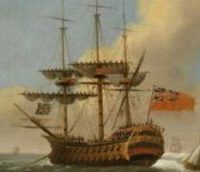 A repost from several years ago. Sailors have long considered Friday to be an unlucky day and Friday the 13th, particularly so. On this Friday the 13th, it seems appropriate to remember the unlikely tale of HMS Friday.
A repost from several years ago. Sailors have long considered Friday to be an unlucky day and Friday the 13th, particularly so. On this Friday the 13th, it seems appropriate to remember the unlikely tale of HMS Friday.
Sometime in the 1800s, it is said that the Royal Navy decided to dispel the stigma attached to Friday. They commissioned a ship and named it the HMS Friday. Her keel was laid on a Friday, she was launched on a Friday, and she set sail on her maiden voyage on Friday the 13th, under the command of a Captain James Friday. She was never seen or heard from again.
While this is an oft-told tale, none of it is true. There has never been a Royal Navy ship named Friday, or any other day of the week, for that matter. HMS Ark Royal, on the other hand, was relaunched on Friday, June 13, 2001, following a major overhaul and continued successfully for another decade before she was decommissioned in 2011. Happy Friday the 13th.
 Five years ago we posted about the beginning of the construction of “A Close to Unsinkable Titanic in China’s Sichuan Province.” Construction began on November 30th, 2016 in Suining, Sichuan province, China, 745 miles from the sea. The full-sized replica will be a fixed attraction, rather than a ship, as a part of Star Energy Investment Group’s plans for a tourist resort called Romandisea, along the Qijiang River in Sichuan’s Daying County.
Five years ago we posted about the beginning of the construction of “A Close to Unsinkable Titanic in China’s Sichuan Province.” Construction began on November 30th, 2016 in Suining, Sichuan province, China, 745 miles from the sea. The full-sized replica will be a fixed attraction, rather than a ship, as a part of Star Energy Investment Group’s plans for a tourist resort called Romandisea, along the Qijiang River in Sichuan’s Daying County.
Our recent post about the collapsing ice wall on the half-scale partial mock-up of the Titanic in an attraction in Pigeon Forge, TN, brought to mind the Chinese full-sized replica. While the replica Titanic was originally expected to take just over a year to complete, CNN reports that the replica is still under construction, with no announced completion date.
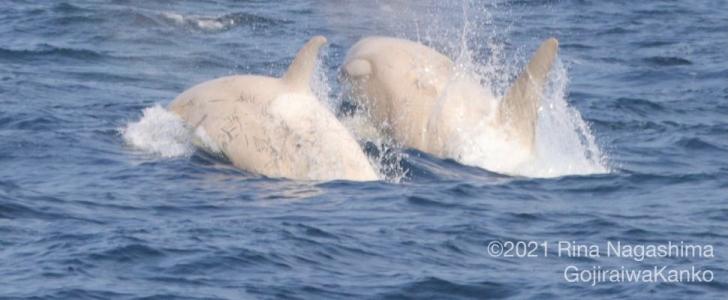 The Live Science blog reports that whale watchers in Japan were recently treated to a rare wildlife encounter when they saw, not one, but two white orcas swimming side by side.
The Live Science blog reports that whale watchers in Japan were recently treated to a rare wildlife encounter when they saw, not one, but two white orcas swimming side by side.
The pair and their pod were spotted by a group on a Gojiraiwa Kanko Whale Watching boat off the coast of Rausu on the northernmost of Japan’s main islands called Hokkaido on July 24, according to a Facebook post.
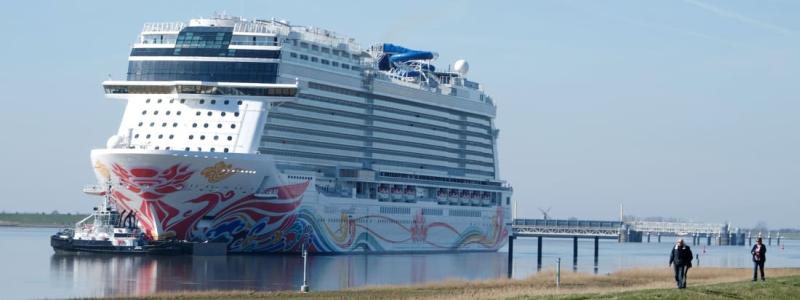 Last May, we posted about a threat by Norwegian Cruise Line (NCL) to pull its ships from Florida ports after the Florida legislature passed a law prohibiting businesses from asking whether employees or customers have been vaccinated against Covid-19, contradicting certain CDC guidelines to resume cruise operations. The law, championed by Gov. Ron DeSantis, slaps businesses with a fine of $5,000 per violation for asking customers to prove they were inoculated against the coronavirus.
Last May, we posted about a threat by Norwegian Cruise Line (NCL) to pull its ships from Florida ports after the Florida legislature passed a law prohibiting businesses from asking whether employees or customers have been vaccinated against Covid-19, contradicting certain CDC guidelines to resume cruise operations. The law, championed by Gov. Ron DeSantis, slaps businesses with a fine of $5,000 per violation for asking customers to prove they were inoculated against the coronavirus.
NCL’s intended policy is to require 100% vaccinations for guests and crew members in each port it sails out of around the world. NCL subsequently sued the State of Florida over the law.
On Sunday, a preliminary injunction was granted by U.S. District Judge Kathleen Williams in Miami to allow NCL to require that passengers show proof of a COVID-19 vaccination before boarding any of its ships in Florida.
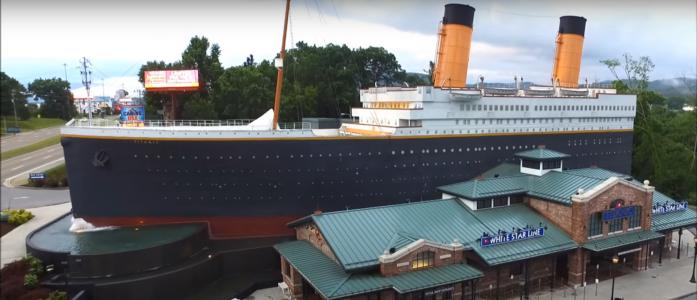 Last week, a wall of ice, representing an iceberg, collapsed at the Titanic Museum Attraction in Pigeon Forge, Tennessee, injuring three guests. The injured were taken to a local hospital. The extent of the injuries was not revealed.
Last week, a wall of ice, representing an iceberg, collapsed at the Titanic Museum Attraction in Pigeon Forge, Tennessee, injuring three guests. The injured were taken to a local hospital. The extent of the injuries was not revealed.
From the attraction Facebook page: Immediately following the accident, Titanic Museum Attraction was closed, and as of the morning of Tuesday, Aug. 3, we reopened to ticketed passengers. The iceberg wall does not currently exist, and the affected area has been blocked off, for the time being. We anticipate it will take at least four weeks for the iceberg to rebuild.
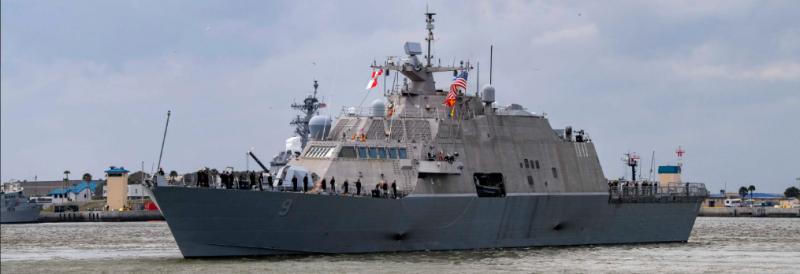
USS Little Rock
We posted back in February, about the Navy’s plans to decommission four relatively new Littoral Combat Ships (LCS). Congress granted approval to decommission two, the USS Independence and the USS Freedom. The Independence was decommissioned on July 29, 20201 and the Freedom is slated to be decommissioned on September 30, 2021. The ships are 11 and 13 years old, respectively.
The two ships were the first LCS built of two variant classes. The Freedom-class ships are 388′ long monohulls, while the Independence-class ships are 418′ long trimarans.
In its new budget proposal, the Navy wants to decommission an additional four LCS — USS Fort Worth, USS Coronado, USS Detroit, and USS Little Rock. The last two ships, both Freedom-class, were only commissioned in 2016 and 2017, respectively.
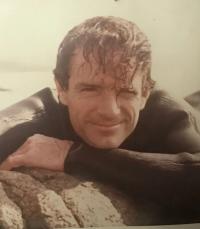 Jon Morrow Lindbergh died recently at the age of 88. He was an American underwater diver who worked as a United States Navy demolition expert and as a commercial diver. He was also a pioneer in cave diving and was one of the world’s earliest aquanauts in the 1960s. He was one of the children of aviators Charles Lindbergh and Anne Morrow Lindbergh.
Jon Morrow Lindbergh died recently at the age of 88. He was an American underwater diver who worked as a United States Navy demolition expert and as a commercial diver. He was also a pioneer in cave diving and was one of the world’s earliest aquanauts in the 1960s. He was one of the children of aviators Charles Lindbergh and Anne Morrow Lindbergh.
His father, Charles Lindbergh, was the first to fly solo non-stop across the Atlantic from New York City to Paris on May 20–21, 1927. In doing so, he became a worldwide celebrity. In 1932, Anne and Charles Lindbergh’s first child was kidnapped and murdered in what would become known as the “crime of the century.” Jon Lindbergh was born on August 16, 1932, only five months after the death of his older brother.
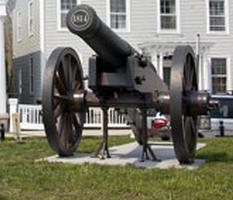 We had a lovely stay in the old seaport village of Stonington, CT on our recent cruise. In honor of our visit, here is a repost from a few years ago about the Battle of Stonington that was fought two hundred and seven years ago next week. In a three-day battle, the militia at Stonington armed with only two cannons drove off a 100-gun four-ship Royal Navy flotilla during the War of 1812.
We had a lovely stay in the old seaport village of Stonington, CT on our recent cruise. In honor of our visit, here is a repost from a few years ago about the Battle of Stonington that was fought two hundred and seven years ago next week. In a three-day battle, the militia at Stonington armed with only two cannons drove off a 100-gun four-ship Royal Navy flotilla during the War of 1812.
Stonington, Connecticut, is a small village on the extreme eastern coast of the state. In the center of the village, two 18 pound cannons are on display in the fittingly named Cannon Square. On their tampions, blocking the ends of the cannon’s muzzles, is the date 1814, when the two cannons, manned by local militia, almost miraculously drove off a British force of four Royal Navy ships under the command of Captain Sir Thomas Hardy, Nelson’s flag captain on HMS Victory at the Battle of Trafalgar. The battle may not have been of any great strategic importance, but was one of a series of American victories in the last days of the War of 1812.
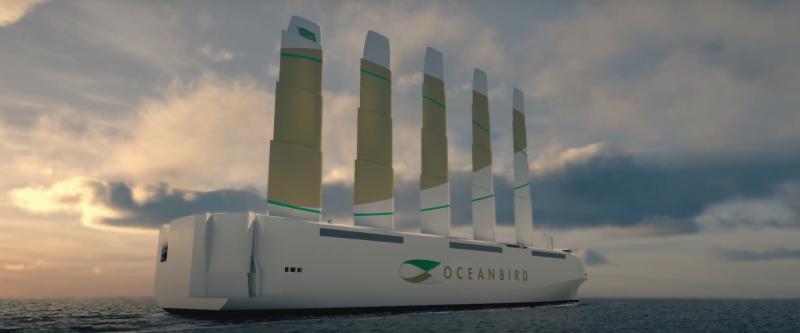 In September, we posted about a Swedish consortium that included Wallenius Marine has designed Oceanbird, a five-masted sailing car carrier, that, if built, will be the largest sailing cargo ship that the world has ever seen.
In September, we posted about a Swedish consortium that included Wallenius Marine has designed Oceanbird, a five-masted sailing car carrier, that, if built, will be the largest sailing cargo ship that the world has ever seen.
Last month, Alfa Laval and Wallenius Marine announced that they would form a 50/50 joint venture – AlfaWall Oceanbird – that will supply innovative wind propulsion solutions for cargo vessels and other ship types. The plan is to have the first Oceanbird system onboard a vessel within five years.
Happy Coast Guard Day! In honor of the day, a post about the former Coast Guard lighthouse tender, USCGC Lilac, a museum ship located on the Hudson River in New York City. The Lilac is America’s only surviving steam-powered lighthouse tender.
At the end of May, we posted “Celebrating Lighthouse Tender Lilac’s 88th Birthday in Audio and Visual Arts” about a temporary public art installation on the historic ship. Here is a follow-on video describing 88 Lilac, the two-part installation, as well as providing a tour and summary of the history of the lighthouse and buoy tender.
The Lilac has now reopened for tours at Pier 25 in lower Manhattan. Click here to learn more.
 On Friday, the schooner Mary E, owned by the Maine Maritime Museum in Bath, was knocked down and flooded while sailing off Doubling Point Light on the Kennebec River, just downriver from the museum. All 18 passengers and crew were rescued from the 73-foot schooner, pulled from the water by boats from Sea Tow, Bath Iron Works security, and good samaritans.
On Friday, the schooner Mary E, owned by the Maine Maritime Museum in Bath, was knocked down and flooded while sailing off Doubling Point Light on the Kennebec River, just downriver from the museum. All 18 passengers and crew were rescued from the 73-foot schooner, pulled from the water by boats from Sea Tow, Bath Iron Works security, and good samaritans.
The schooner has now been recovered and returned to the museum dock. An investigation into the accident is ongoing.
 We recently sailed to Block Island, a picturesque windswept island, roughly a dozen miles off the coast of Rhode Island. A haven for vacationers, Block Island also features the first commercial offshore wind farm in the United States. Five 6MW turbines spin three miles south-est of the island generating enough electricity to power 17,000 homes. The wind farm is small by international standards but is an important first step.
We recently sailed to Block Island, a picturesque windswept island, roughly a dozen miles off the coast of Rhode Island. A haven for vacationers, Block Island also features the first commercial offshore wind farm in the United States. Five 6MW turbines spin three miles south-est of the island generating enough electricity to power 17,000 homes. The wind farm is small by international standards but is an important first step.
It is fitting that Block Island hosts the first US offshore wind farm, as it has a history of utilizing wind power that stretches back over 200 years. An updated repost.
The Howard Steamboat Museum recently posted a video “A River, a Family, and a Shipyard: The History of the Howard Family of Steamboat Builders” that tells the story of James Howard and the Howard Family, who were the most successful steamboat builders in American history. James Howard established his boatyard in Jeffersonville, Indiana in 1834. By 1890, half of the steamboats on the western rivers were built by the Howards.
A River, a Family, and a Shipyard: The History of the Howard Family of Steamboat Builders
Thanks to Hope Wright for pointing out the video on Facebook.
